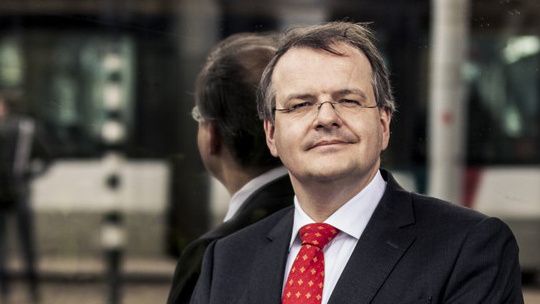Lemmens, together with co-manager Jeroen van Oerle, is responsible for Robeco CGI Global Fintech Equities strategy, a Luxembourg-domiciled Sicav product launched in November 2017. It was created as a spin-off from Robeco New World Financial Equities strategy, which Lemmens has been managing since 2008.
One of the biggest challenges for the banks, and the biggest opportunities for software manufacturers, is the outdated technology that many banks still use in their core systems. Lemmens compares modern banks with their sleek mobile apps and websites to a shiny new Ferrari with a very old engine held together with tape and rubber bands.
While upgrading a bank’s IT infrastructure and core systems is a daunting undertaking, and many banks continue to put it off, improving margins and easing regulatory pressure provide incentives to banks to finally tackle the challenge, Lemmens noted.
“The innovation we’ve seen in the past 30 years will be easily surpassed in the next five years,” Lemmens told our sister publication FSA. “[Banks] often use outside vendors to help them and that’s where we see a lot of opportunities.”
Few fintech funds
The fintech theme has been hyped, but there are surprisingly few investment vehicles devoted to the theme. Aside from two domestic Japanese mutual funds and two ETFs, Robeco claims it has the only fintech-focused strategy on the global market.
Lemmens believes his fintech strategy is more selective than the two ETFs.
“We want to include companies that are really fintech,” Lemmens said. This means three main areas: payment processors, software manufacturers and cybersecurity.
“We believe that online payments will become mainstream and cash will be the exception,” he said. China, with its ubiquitous mobile payments, gives us a glimpse of the future and of the opportunities that lie in other markets. Listed companies would include Mastercard, Visa or Paypal.
Lemmens limits his strategy to listed companies. One reason is to reduce risk by investing in companies that have already proven themselves to investors through an IPO. Another reason is to be able to provide liquidity, which venture capital investing, with seven-year lock-ups, does not.
Does eschewing start-ups limit opportunities? Not at all, according to Lemmens. “Some companies we bought directly after the IPO had run up 200%, 300% in the past year,” he said.
“[However], we’ve seen some IPOs where we didn’t understand the valuation,” he said.
He also stays away from companies that are not profitable at the time of the IPO and the profitability looks too far away.
“In our universe we have over 200 companies with an average market cap of $10bn,” Lemmens said. The strategy holds 63 names today, with a goal to keep the count between 40 and 70.
Because the fund does not invest in start-ups, the strategy’s exposure to the newest and sexiest technologies is necessarily low. “We have only three listed companies involved in blockchain in which we can invest,” he said.
Portfolio makeup
Technology stocks account for 60-65% of the holdings, 30% are financial companies and the rest fall under other sectors, according to Lemmens. Companies involved in payments make up 30-40% of the portfolio, technology companies a similar share and the rest are traditional financial firms.
The strategy holds 1%-3% of any individual stock position, depending on the managers’ conviction. The 3% holdings on 31 December were Alliance Data, a US provider of loyalty card services; TCS Group, a provider of online financial services in Russia; Capital One Financial, a US bank and credit card provider; and online payments firm Paypal.
In order to fall within the investible universe, the company must derive at least 25% of its profits or revenues from financial services activity. This excludes such companies as Alibaba, which is active in financial services through its subsidiary Ant Financial. Should Ant Financial be spun off as a separate listed entity, it will fall within Lemmens’s investible universe. Companies with insufficient stock liquidity are also excluded.
Three-year to 31 December 2017 performance of the Robeco New World Financial Equities Fund vs its sector








